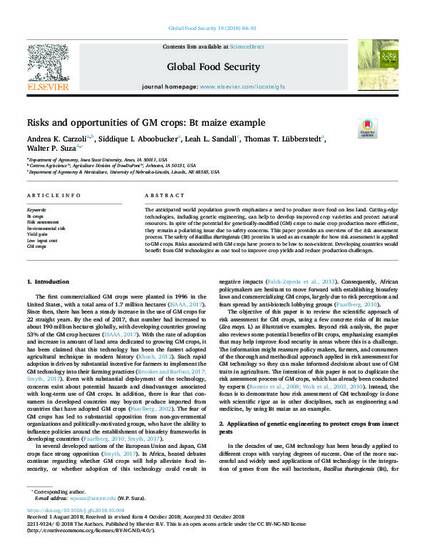
The anticipated world population growth emphasizes a need to produce more food on less land. Cutting-edge technologies, including genetic engineering, can help to develop improved crop varieties and protect natural resources. In spite of the potential for genetically-modified (GM) crops to make crop production more efficient, they remain a polarizing issue due to safety concerns. This paper provides an overview of the risk assessment process. The safety of Bacillus thuringiensis (Bt) proteins is used as an example for how risk assessment is applied to GM crops. Risks associated with GM crops have proven to be low to non-existent. Developing countries would benefit from GM technologies as one tool to improve crop yields and reduce production challenges.
Available at: http://works.bepress.com/thomas-lubberstedt/89/

This article is published as Carzoli, Andrea K., Siddique I. Aboobucker, Leah L. Sandall, Thomas T. Lübberstedt, and Walter P. Suza. "Risks and opportunities of GM crops: Bt maize example." Global Food Security 19 (2018): 84-91. doi: 10.1016/j.gfs.2018.10.004.